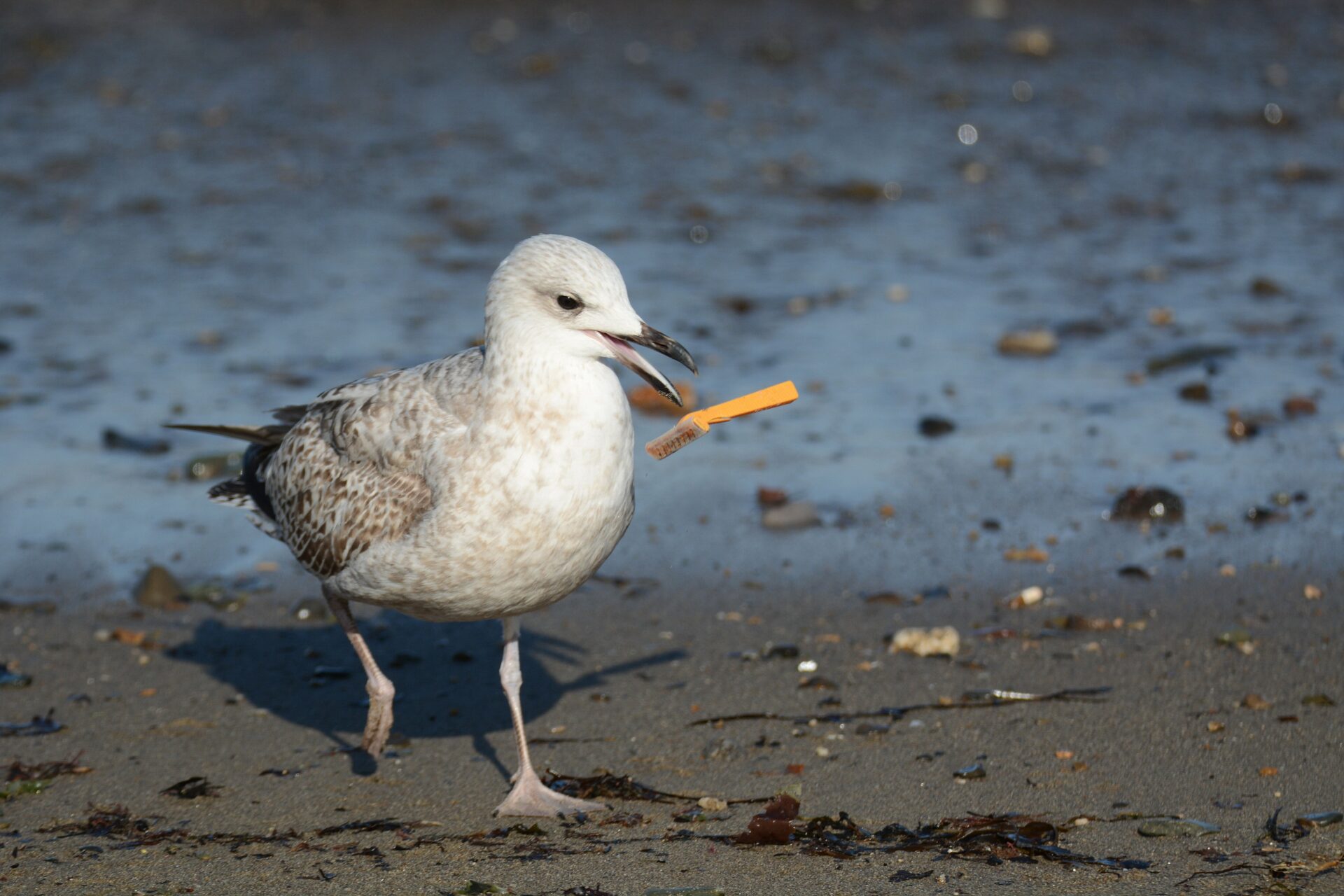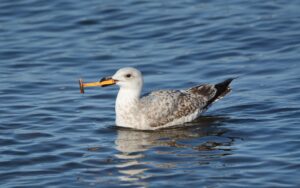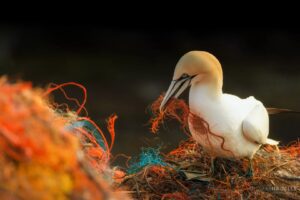First held in 1970, Earth Day comes around on 22nd April every year. It’s a day of awareness to shine light on environmental issues, and this year’s theme is ‘Planet versus Plastics’. The ‘Planet versus Plastics’ theme includes a call for a 60% reduction in the production of plastics by 2040, with the goal of building a plastic-free future for future generations.
‘Planet versus plastics’ is a very relevant theme for the seabird team at BirdWatch Ireland. Seabirds operate in highly plasticised environments, and the impact of plastic can be devastating for them, causing injury, death or disrupting their feeding and breeding behaviours. Entanglement and ingestion are the two main ways that marine litter affects seabirds.
Herring Gull. Brian Burke.
Ingestion
Seabirds often mistake plastic debris for prey, like fish, and ingesting plastic particles can injure their digestive tract or kill them. [1] Plastics are not only a macro-contaminant (causing physical damage) but also a micro-contaminant (due to the leaching of chemicals), and the chemicals in plastic can also leach into the seabird’s body, causing other long-term health issues. [2]
Plastic pollution can disrupt the natural feeding behaviours of seabirds. If seabirds stuff their stomachs with marine litter, they may feel full, but they won’t have gained any proper nutrients. Plastics are also completely indigestible, blocking seabirds’ systems. A diet of plastic can therefore negatively impact the body condition of seabirds and some seabirds may even starve to death as a result. [3]
Herring gull. Brian Burke.
Floating plastic debris at sea can also resemble natural prey, meaning that seabirds may spend time searching for food in areas heavily polluted with plastic. This expends their energy and can leave seabirds exhausted, with a reduced capacity to forage elsewhere.
Gannet. Thomas-Haeusler.
Entanglement
Seabirds can become entangled in all kinds of plastic debris, from fishing lines to commercial packaging. This can impair their ability to fly, swim, and hunt for food. Entanglement can lead to exhaustion, injury, and death among seabirds.
Often seabirds mistakenly collect plastic as nesting material and use it in their nests. Seabirds using plastic debris as nesting material can result in decreased breeding success, and plastic pollution in nests can ensnare young and prevent them from fledging. [4]
Gannet. John O’Brien.
Legislative support
Years of campaigning has raised the profile of plastic as a marine pollutant, with a 2022 EPA report finding that 95% of the Irish population are concerned about the amount of plastic that we use as a society. [5]
In Ireland, we have had a ban on the sale of certain single use plastic products (e.g. straws, stirrers, cutlery) since 2021, and ‘Ireland’s Waste Action Plan for a Circular Economy 2020 – 2025’ flags future policy initiatives linked to plastics, including that all packaging on the Irish market will be reusable or recyclable in an economically viable way by 2030. Ireland can afford to be more ambitious; according to the EPA, there is strong public support for policy incentives relating to the reduction of single use plastic products, with 92% supporting improved education, 73% supporting a ban on their production and sale, and 64% supporting the introduction of a levy at the point of purchase.
With a deposit return scheme now in place, there are further legislative measures coming down the road for Ireland under the EU Single Use Plastics Directive, including new extended producer responsibility initiatives for certain products. This compensatory approach would require policy action on plastic pollution from manufacturers, moving us beyond simply reducing the use of plastic bags towards actively addressing the sources of plastic pollution in our oceans.
Herring Gull. Brian Burke.
Plastic as an important conservation concern
Alongside other pressures like overfishing and climate change, the growing amount of plastic in Irish waters is another negative issue for seabirds to contend with. Overall, the cumulative effect of plastic pollution on seabirds is significant and can result in population declines, changes in distribution, and long-term ecological consequences. Mitigating plastic pollution requires concerted efforts at local, national, and international levels, and Ireland must play its part in stemming the flow of plastic in Irish waters for the health of our seas and seabirds.







